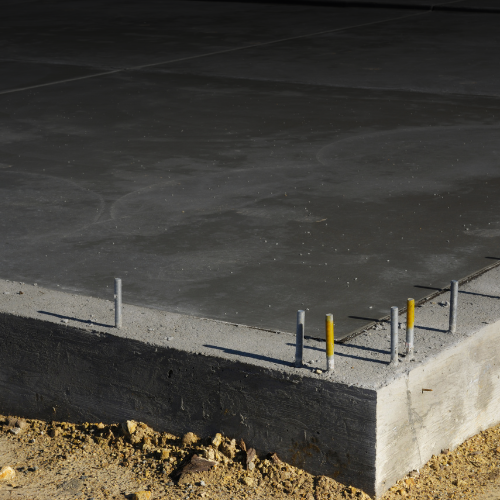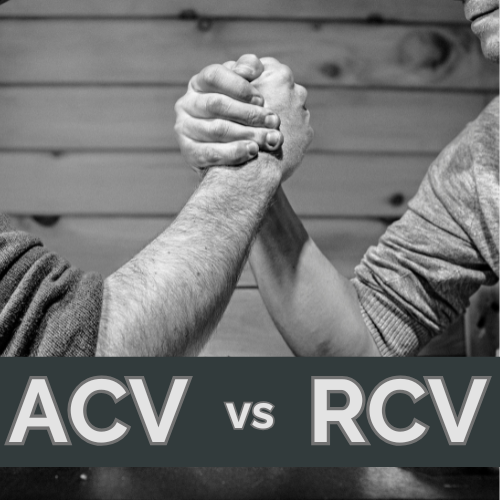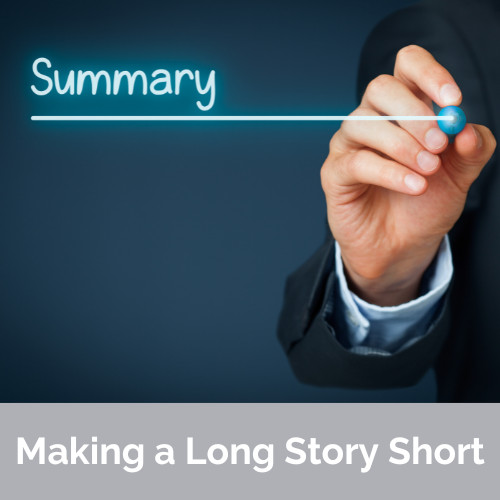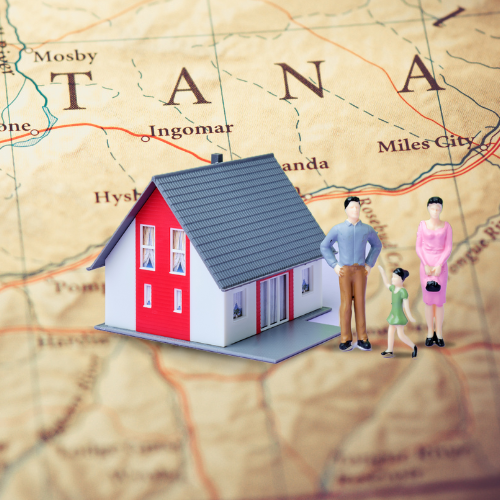The Basics

Start With A Good Foundation
A homeowners insurance policy in Miles City, MT is a comprehensive multiline policy that combines property and liability coverage into one convenient package
The property portion protects your tangible assets, such as your home and belongings, while the liability component safeguards you against financial losses if you or your family members are found legally responsible for bodily injury or property damage to others
Most homeowners in Miles City rely on loans to purchase their homes, and lenders typically require a homeowners insurance policy as part of the mortgage agreement to protect their interest in you
The homeowners policy satisfies the lender’s requirements and it provides financial protection for your property and personal liability
Understanding what your insurance policy covers and what it doesn’t cover is the cornerstone to ensuring your investment is secure from unexpected risks
Policies Are Not All the Same

You can’t compare apples to oranges
When purchasing a homeowners policy in Miles City, it’s important to understand the type of policy you’re selecting, as not all policies are the same
The two main categories are dwelling policies and homeowners policies
- A dwelling policy is designed for non-owner-occupied properties, such as rentals or vacation homes, and primarily covers the structure.
- A homeowners policy, on the other hand, provides broader coverage for owner-occupied homes, including protection for personal belongings, liability, and additional living expenses if the home becomes uninhabitable
We’ll be focused on homeowners policies and not dwelling policies
The Homeowners Policy

It’s a Contract
There are six primary types of homeowners insurance policies in the marketplace: HO-2, HO-3, HO-4, HO-5, HO-6, and HO-8.
Two additional types, the HO-1 and the HO-7, are less commonly used and not covered here
The differences between these policies lie in:
- The perils (risks) they cover, such as fire or theft.
- How losses are valued, either as Actual Cash Value (ACV) or Replacement Cost Value (RCV)
The Perils (Risks) Covered

Expect the Unexpected
When purchasing homeowners insurance, understanding how risks (or perils) are covered is vital
Policies use one of three forms; Basic, Broad, or Open Perils to define what risks you are insured against. The premium you pay is directly tied to the level of risk your policy covers, with more comprehensive coverage typically costing more
The Basic Form
The Basic form offers very limited protection and is rarely used. It’s a named-peril form, meaning it only covers losses caused by specific risks listed in the policy
- The Basic form generally protects against just three perils
- Fire
- Lightning
- Internal explosion
The Basic Plus Extended Coverage
This form expands on the Basic form by adding 11 additional named perils
- While still limited, it’s more common than the Basic form and covers:
- Wind
- Civil Commotion
- Smoke
- Hail
- Aircraft
- Vehicles
- Volcanic eruption
- Explosion (Internal or External)
- Riot
- Vandalism and malicious mischief
- Theft
Example: If a hailstorm damages your roof or a burglar breaks into your home and steals valuables, these events would be covered under this form.
The Broad Form
The Broad form builds on Basic Plus Extended Coverage by adding protection against additional named perils
- It covers all 14 risks listed above plus these:
- Burglary damage (not theft, but damage caused during a burglary)
- Weight of ice, sleet, or snow (e.g., a roof collapse)
- Glass breakage (e.g., broken windows from flying debris)
- Accidental discharge of water or steam from plumbing, heating systems, or appliances (e.g., burst pipes)
- Freezing of plumbing or household appliances (e.g., frozen pipes in winter)
- Falling objects (e.g., tree branches damaging your roof)
- Sudden electrical current damage (e.g., power surges damaging electronics)
- Collapse due to hidden decay or other covered causes (e.g., structural failure due to unseen water damage)
- Sudden tearing apart or cracking of heating systems, water heaters, or air-conditioning systems
Example: If a pipe bursts in your home during freezing weather or a tree limb falls on your roof during a storm, these events would typically be covered under Broad Form policies
The Open Perils Form
The Open Perils form, also called Special Peril Coverage, offers the most comprehensive protection. it protects against all causes of direct physical loss to the dwelling and other structures unless explicitly excluded in the policy
A standard HO-3 policy uses Open Perils coverage for Coverages A (Dwelling) and B (Other Structures), while Coverage C (Personal Property) remains on a named-peril basis using the Broad Form list
In contrast, an HO-5 policy extends Open Perils coverage to personal property as well
Example: If your roof is damaged by an unexpected event like a falling satellite or an animal breaks into your attic and causes damage, events not specifically excluded, they would likely be covered under an Open Perils policy
How Peril Forms Apply Across Policy Types
| Policy Type | Coverage A & B | Coverage C |
| HO-2 | Named-peril (Broad Form) | Named-peril (Broad Form) |
| HO-3 | Open-peril | Named-peril (Broad Form) |
| HO-4 | N/A (No Dwelling/Structures) | Named-peril (Broad Form) |
| HO-5 | Open-peril | Open-peril |
| HO-6 | Named-peril (Broad Form for interior structures) | Named-peril (Broad Form) |
| HO-8 | Named-peril (Basic Plus Extended Coverage) | Named-peril (Basic Plus Extended Coverage) |
Final Thoughts on Perils Coverage
Understanding how perils are covered in your homeowners insurance policy is necessary for selecting the right level of protection for your needs
While named-peril policies like HO-2 and HO-8 offer limited coverage for specific risks, Open Perils policies like HO-3 and HO-5 provide broader protection for your home and belongings
Reviewing your policy carefully and considering available endorsements for excluded risks like flooding or earthquakes, can help ensure you’re fully protected from unexpected losses
ACV vs RCV

Choose Wisely
- The difference between Actual Cash Value (ACV) and Replacement Cost Value (RCV) lies in how claims are paid after a loss:
- ACV accounts for depreciation: You’ll receive the current market value of the damaged or lost item, which may not be enough to replace it with a new one.
- RCV covers the cost to replace the item with a new one of similar kind and quality without deducting for depreciation.
- While RCV offers more comprehensive coverage, it typically comes with higher premiums compared to ACV policies
- Example: If your 10-year-old roof is damaged by hail:
- An ACV policy might pay $5,000 due to depreciation
- An RCV policy would cover the full $10,000 replacement cost
Understanding the Intended Use

A Place for Everything, and Everything in its Place
- Each type of homeowners insurance policy is designed for specific circumstances:
- HO-2, HO-3, and HO-5: These forms are typically used to cover standard homes like those in Miles City.
- The HO-3 is the most common because it offers broad coverage at an affordable price.
- HO-4: Designed for renters.
- HO-6: Tailored for condo owners.
- HO-8: Also known as the Modified Coverage Form, this is intended for older homes with unique risks
- HO-2, HO-3, and HO-5: These forms are typically used to cover standard homes like those in Miles City.
The Coverages

It’s the Main Components
- A homeowners policy includes two main sections:
- Section I – Property Coverages
- Section II – Liability Coverages
Section I
Under Section I, there are four property coverages: Coverage A (Dwelling), Coverage B (Appurtenant Structures), Coverage C (Personal Property), and Coverage D (Loss of Use)
Coverage A
This coverage applies to your home itself and any structures attached to it
It also covers materials and supplies located on or next to your property that are intended for repairs or construction of those structures
Note: Renters (HO-4) do not have dwelling coverage since they don’t own the building itself. Condo owners (HO-6) may have limited dwelling coverage for interior elements like walls or floors depending on their policy
Coverage B: Appurtenant Structures
This coverage applies to structures on your property that are separate from your home by a clear space—such as detached garages or sheds
Structures used for business purposes or rented out are typically excluded unless specified otherwise
Coverage C: Personal Property
Coverage C protects personal belongings owned or used by you anywhere in the world—including items at home or temporarily stored elsewhere
Coverage Away from Home
When personal property is away from your primary residence (as listed on your policy), coverage is generally limited to 10% of your Coverage C limit or $1,000—whichever is greater
- Exceptions:
- If you’re moving to a new principal residence.
- If you temporarily relocate due to damage making your home uninhabitable
Excluded Property
- Certain types of personal property are excluded under most standard policies:
- Animals
- Motorized vehicles
- Property rented to others off-premises
Special Limits on Certain Items
- Some categories have specific limits:
- $1,500: Jewelry theft
- $2,500: Firearms theft
For high-value items exceeding these limits (e.g., expensive jewelry), consider scheduling them under endorsements
Coverage D: Loss of Use
- If your home becomes uninhabitable due to a covered peril:
- Additional Living Expenses (ALE): Covers extra costs like hotel stays
- Loss of Fair Rental Value: Reimburses lost rental income
- Civil Authority Prohibitions: Covers temporary relocation costs if authorities restrict access due to nearby damage
A Couple of Things to Know
- Covered Perils Only: This coverage only applies if the damage is caused by something your policy covers—like fire or wind damage. Losses from things like flooding or earthquakes aren’t covered unless you’ve added extra protection
- Limits Apply: There are limits on how much and how long this coverage will pay out, so it’s worth checking your policy details to understand what’s included
Additional Coverages or Endorsements
- In addition to Coverages A, B, C, & D many homeowners forms will contain certain additional coverages
- Debris Removal: helps cover the costs of cleaning up and disposing of debris resulting from a covered peril
- Reasonable Repairs: Reimburses the insured for costs incurred to make temporary or necessary repairs to protect their property from further damage after a covered loss
- Fire Department Service Charge: It reimburses policyholders for fees charged by a fire department when they respond to protect or save insured property from a covered peril, such as fire, lightning, or explosion
- Property Removed: It provides temporary protection for personal property that is moved away from the insured premises to prevent it from being damaged by a covered peril.
- Credit Card, Electronic Fund Transfer Card or Access Device, Forgery, and Counterfeit Money: It provides reimbursement for financial losses related to unauthorized use of credit cards, debit cards, forgery of checks or documents, and counterfeit money
- Loss Assessment: An optional endorsement available for homeowners or condo insurance policies. It provides financial protection when a homeowners association (HOA) or condo association issues a special assessment to cover costs that exceed the limits of the association’s master insurance policy
- Glass or Safety Glazing Material: An additional coverage in many homeowners insurance policies that provides protection for damage to glass or safety glazing materials that are part of the insured property. This coverage specifically applies to items like windows, storm doors, and storm windows
Section II Coverages: Liability
Liability coverage is an important part of homeowners insurance, as it protects you from financial responsibility if you’re found legally liable for injuries or property damage.
In Miles City, homeowners face a variety of liability risks—both on and off their property
Common Scenarios:
- On Your Property: A visitor slips on ice in your yard.
- Caused by Children/Pets: Your child breaks a neighbor’s window playing baseball or the dog bites the delivery man.
- Away from Home: You drop something heavy on someone’s foot while shopping and they are injured
Coverage E – Personal Liability
Protects against lawsuits related to bodily injury or property damage caused by you or family members
Coverage F – Medical Payments to Others
Covers minor medical expenses if someone is injured on your property—regardless of fault
Liability coverage is one of the most valuable components of a homeowners policy because it helps shield you from potentially significant financial losses due to accidents or injuries.
Understanding how these coverages work can help ensure you’re prepared for unexpected situations
In a Nutshell

The Mic Drop
Homeowners insurance in Miles City, MT, provides valuable protection for your home, personal belongings, and financial stability
It safeguards against damage from unpredictable events like fire, hail, or theft, ensuring your home and possessions can be repaired or replaced after a covered loss
Beyond property protection, it offers liability coverage to shield you from financial responsibility if someone is injured on your property or if you unintentionally cause damage to someone else’s property
Additionally, homeowners insurance can cover temporary living expenses if your home becomes uninhabitable due to a covered loss
With its ability to protect your biggest investment and provide peace of mind, homeowners insurance is a vital tool for managing life’s uncertainties
Armor Insurance Agency

If you liked this article you can find more here:
Curiosity pays off—find out how home insurance can safeguard you
Call: (406) 416-1096
We are an equal opportunity provider


Leave a Reply